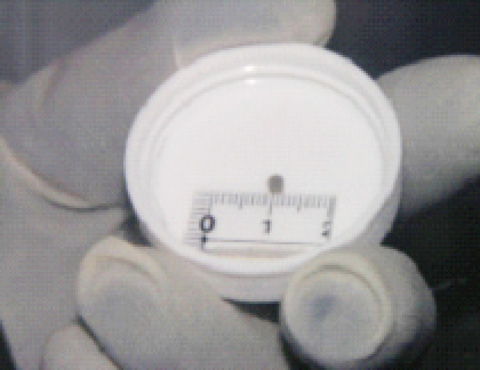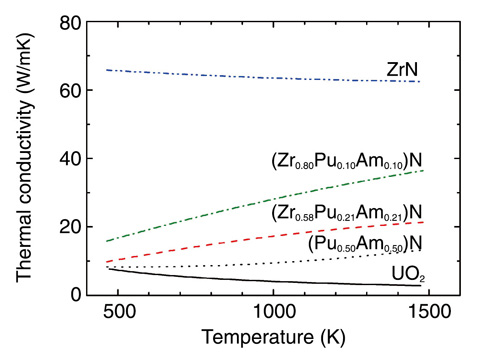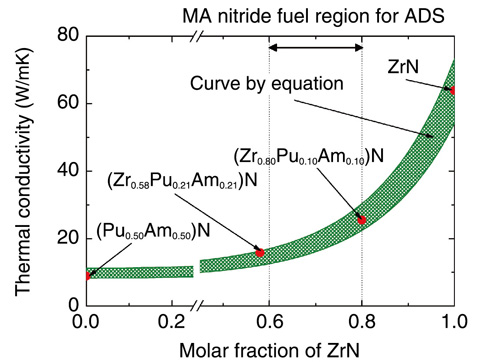
Fig.8-11 (Zr0.58Pu0.21Am0.21)N sintered compact

Fig.8-12 Thermal conductivity of Zr-based TRU nitrides

Fig.8-13 ZrN concentration dependence of thermal conductivity at 873 K

Fig.8-14 Fitting equation of thermal conductivity for (ZrxPu(1-x)/2Am(1-x)/2)N
Spent fuels from nuclear power plants contain minor actinides (MAs: Np, Am, Cm) which are long-lived radioactive nuclides; thus, the management of MAs will be a key issue for sustainable nuclear energy use. To solve this problem, nuclear transmutation technology using an accelerator-driven system (ADS) is an option in future nuclear fuel cycles. A nitride solid solution containing MA and Pu (transuranium [TRU] nitride) diluted by ZrN is proposed as a candidate material for the ADS fuel. Therefore, it is necessary to develop a thermal conductivity database for a practical fuel design. To this end, we prepared Zr-based TRU nitrides and measured their thermal diffusivity and heat capacity to determine their thermal conductivity. Furthermore, the thermal conductivity was fitted to equations as functions of the temperature and ZrN concentration.
A high-density sintered compact of Zr-based TRU nitride was prepared as follows (Fig.8-11). (1) The TRU nitride was prepared via carbothermic reduction of dioxide. (2) ZrN powder was synthesized from Zr metal through its hydride. (3) The nitride mixture was pressed into a disk and sintered in a stream of N2+4%H2 gas. Using the sintered compact, the thermal diffusivity and heat capacity were measured by a laser flash method and drop calorimetry, respectively.
The thermal conductivity of Zr-based TRU nitride increased with temperature, unlike that of oxide fuels (Fig.8-12). The increase in thermal conductivity with temperature is believed to be derived from the increase in the electronic contribution. The results prove that a Zr-based TRU nitride is a good candidate fuel with superior thermophysical properties because ZrN, used as a diluted material, effectively raises the thermal conductivity. A fitting equation for the thermal conductivity of (ZrxPu(1-x)/2Am(1-x)/2)N was obtained by evaluating the ZrN concentration dependence at each temperature (Fig.8-13, Fig.8-14). The predicted values agreed well with the experimental ones, indicating that the thermal conductivity of a nitride fuel for an ADS can be predicted in a ZrN concentration range from 60 to 80mol%.
In this study, we obtained the thermal conductivity and heat capacity of Zr-based TRU nitrides for the first time and prepared the fitting equation for the thermal conductivity. These results, which can be included in a database for practical design study, will contribute to ADS fuel development.